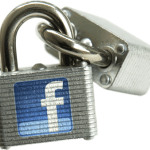Let’s imagine you decided to run your first WordPress website. There are two major steps that you need perform to become a “part of Internet”. First of all you have to choose and register domain for your website and secondly you need to purchase hosting. Advanced users can tell you that both steps might be combined into one, because most hosting providers give you free domain once you purchased their service for 6 months or more. But I don’t recommend you to use this option. Why?
- In most cases you can’t control domain in real time. Whenever you decide to do something with domain (change nameservers, unlock, get EPP-code, confirm movement to another registrar, etc.) you must contact hosting support team and ask them to do required actions. Not really convenient. If you register domain directly with registrar (for example, Namecheap) you are able to do any changes by yourself using domain control panel.
- As you can see “Free domain” is “marketing feature”. It chains you to particular hosting provider. Of course you are still free to move your website to another provider but this action become time-consuming procedure. I have such experience. Couple years ago it took me almost 3 weeks to move website from one hosting to another. Now if I decide to change hosting provider, it takes me less than one day.
- If hosting provider blocks your account for some reasons (because of claims or something else) or disappear from market at all, you can lose your domain. But if your domain is registered separately you just change nameservers and use another more reliable hosting.
I hope I have assured you that keeping your domain separately from hosting is good idea. As you’ve already understood in this article I’ll describe how to choose and register domain.
Choosing of domain and its registration consists of several steps.
First of all you have to decide what domain zone (or Top Level Domain, TLD) to use. What is it? Domain zone (TLD) is a suffix of your domain. For example, domain zone (TLD) for domain “icprojects.net” is “.net”, for domain “google.com” it is “.com”, etc. There are many of them. Below I list domain zones (TLD). This table gives you an idea how to choose appropriate zone.
- .COM (commercial): This TLD is good for commercial websites. If you plan to sell something or provide any paid services worldwide, this domain zone is for you. “.COM” is a most popular TLD and it is quite difficult task to choose beautiful name (most of them are already taken).
- .NET (network): Initially this TLD was created for network and IT oriented websites, but at present days it became alternative TLD for “.COM”. If desired “.COM” is not available you can try “.NET”.
- .INFO (information): This TLD is perfect for information websites and personal blogs.
- .ORG (organization): If you create website for non-profit organization, this TLD is for you.
- .FM, .TV, .MOBI, .TEL, .TRAVEL, .XXX, etc.: Another international TLDs. I think they speak for themselves.
- .US, .RU, .FR, .DE, .NL, etc. (national domains): If your website is targeted to citizens of particular country it is better to use national TLD.
OK. You’ve chosen desired domain zone (TLD). Now you have to think about domain name. I want to give you several advices how to name your domain:
- Invent easy to remember domain name. Don’t use too long names. I think you agree that domain name “pepper.com” looks better than “hotandspicypepper.net”.
- Avoid ambiguous spelling. When you pronounce domain name it must sound clear. Good example: futurama.com. Bad example: peschyannik.net.
- Don’t use symbol “-” (minus) in domain name. It may be another reason of misunderstanding in cases when you pronounce domain name (for example, by phone).
- If it is possible, add some sense to domain name.
There are over 500 million websites in internet, so please be ready that it will take some time to find beautiful domain that is not already taken by somebody else. You always can check the availability of domain on this website. Switch on your imagination, be creative, follow the advices and find the domain that fit the idea of your website.
The last step is to decide what registrar (the company that register domain for you) to use. There are bunch of registrars on the market. Most of them have equal prices and you can “hire” any of them, but I recommend you to use Namecheap. They have convenient domain control panel, give you full access to control the domain and provide free WhoisGuard protection*.
* – When you register new domain with any registrar you must provide your real name, post address and e-mail. By default this data is available for everyone. But you can hide it using WhoisGuard protection. It protects your personality. Most registrars offer WhoisGuard protection as a separate paid service.











Comments are closed.